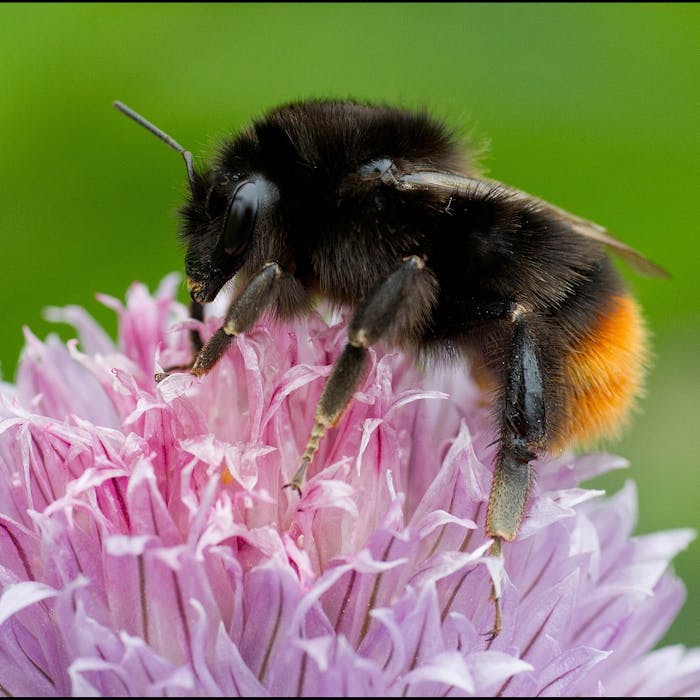
The red-tailed bumblebee - a busy life
It seems spring has never truly arrived until you catch sight of your first bumblebee, but do you know what species it is? The red-tailed bumblebee is a very common bumble bee, emerging early in the spring and feeding on flowers right through to the autumn. It can be found in gardens, farmland, woodland edges, hedgerows and heathland: anywhere with flowers.
There are more than 250 species of British bee - bumblebees, mason bees, mining bees. All are just one small part of a big family.
There are 24 species of bumblebee alone in the UK - with tree bumblebees, white-tailed bumblebees and common carder bees prevalent alongside the red-tailed variety. All are familiar for their 'ball of fluff' appearance and seemingly constant, if clumsy, journey from bloom to bloom in search of nectar.
The female red-tailed bumblebee is a very large, black bumblebee - around 17mm - with a big red 'tail'. Males are smaller and, as well as the red tail, have two yellow bands on the thorax and one at the base of the abdomen. There are two other similar species of bumble bee, but both are much rarer.
Bumblebees are a social species, nesting in colonies ranging from a few dozen to several hundred. The red-tailed bumblebee prefers to nest underground in old burrows, under stones, or at the base of old walls.
As with other social insects, the queen emerges from hibernation in spring and starts the colony by laying a few eggs that hatch as workers; these workers tend the young and nest. Males emerge later and mate with new females who are prospective queens. Both the males and the old queen die in the autumn, but the new queens hibernate.
These bees are found throughout the UK, but less common in northern areas.
Further reading
Links to external websites are not maintained by Bite Sized Britain. They are provided to give users access to additional information. Bite Sized Britain is not responsible for the content of these external websites.
